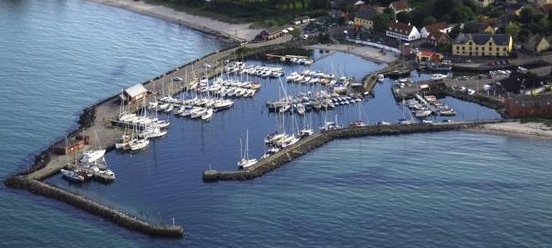No More Stolen Elections!
Unite for Voting Rights and Democratic Elections
Denmark town achieves true Energy Democracy

Ballen, Denmark, is one of 18 small villages on Samsø, an island of 4,000 residents. The new Energy Academy with its 11 new jobs is located here, doubling as a meeting house and visitor center for those who come here from the world over to learn how to become 100 percent energy-independent. The island has 21 huge wind turbines generating over 104 million kW h/year, enough to power 26,000 homes. Sixty percent of the island’s buildings are heated by 4 solar district heating systems, with straw-burning back-up boilers; the rest use electric heat pumps. Cars run on electricity. All this is owned by the islanders, who receive annual dividend checks of hundreds of euros from the sale of excess electricity.
“How did you pull all this off?” the visitor asks. “All we did is talk about what to do for the better part of three years”, comes the reply. “That conversation was the key. The rest was simply engineering. In the beginning there was all manner of resistance. Now that we own them, the wind towers look good and sound just fine. They kill no birds, and cause no health problem s either. Certainly, nobody com plains about the jobs being created.”
Until 1997 Samsø was totally dependent on oil and electricity from the mainland. That year, three forward-thinking individuals entered the town into a government-sponsored contest that challenged communities to convert to renewable energy. Samsø won an award, but the fine print called for, among other things, broad public participation and matching funds. The idea attracted more naysayers than supporters from among the conservative locals. “We can’t afford it. We don’t have the money”.
Then disaster struck. A corporate buyout closed the island’s century-old slaughterhouse. Jobs were lost. With lots of heirloom potato farms but no industry, the island community’s very survival became the topic of panicked conversations. Old timers dusted off the island’s long tradition of farmer cooperatives. Naysayers turned into cautious supporters of the much-criticized renewable energy plan. The unaffordable suddenly became a promising solution as neighbors sat down together to wrestle with how to turn the plan into reality. That conversation took almost 3 years but, In the end, Samsøers raised their 50 percent share of funding through low interest loans guaranteed by their municipal government, to be repaid from electrical power sales to the mainland.
Importantly, the people of Samsø learned not to focus on money, but on what they wanted to achieve: survival of their way of life; creating jobs and a sustainable local economy; doing their share to save the planet from climate disaster. They wanted to be carbon-neutral and energy independent “with no strings attached”, i.e. with everything under their local control. They wanted to rely on existing resources and on proven technology – preferably Danish-made, recyclable, and easy to maintain. They wanted “energy-democracy” – i.e. no corporate control. No longer “consumers”, they opted to be citizens. Therefore they quantified the island’s energy resources and needs, coming up with a comprehensive plan, including how to pay for it. With that plan in hand, it wasn’t hard to raise the necessary funding. The rest was, indeed, “simply engineering”.
The plan took a scant five years to implement. Today Samsø’s cooperatively owned energy assets are worth over 60 million euros ($83.4 million). “We all get dividend checks. But, even if we didn’t, the savings on our energy bills – compared to what we would be paying today for fossil fueled heating, water heating, transportation, and electricity – would make this project a winner for the community”.
What about us? Midcoast Maine and Samsø are similar in m any respects. We are both rural. The combined population of Damariscotta, Newcastle, Nobleboro, Bremen, Bristol, South Bristol, and Edgecomb, is larger (11,145), but our population density (35/k m2 vs. 33/k m 2) is identical. Tranebjerg, Samsø’s largest village, has 829 residents. Our smaller of our towns have similar populations and the average of the above 7 towns is 1,616. Like Samsø two decades ago, we are heavily dependent on oil, and suffer from its fast-rising price. Like they used to, we still try to solve our problems as individuals, forgetting that alone we don’t have much of a voice, and hence much control, over our energy and economic future.
Like the people of Samsø, we have begun to rediscover our collective dimension. A number of us are working to build a local energy cooperative, to freeze, then cut our energy costs, and ultimately to get us off fossil fuels. Like on Samsø, engineering is the easy part. We already worked out how to permanently cut our fuel consumption using only the money we now spend on fuel. Our big task is to build com m unity. Imagine all the brain-power and creativity we will unleash as we do!
It’s pointless to argue with success. I’d be happy to talk about what to do for some week s, even months. As the Samsø tour guide observed, “We had to build community before we could act as one” Our own key to success will likewise be the creative community building conversation we are now engaged in, not some government grant. As for jobs, let’s make it easy to keep our oil dollars in Maine and watch the market create them.
Originally published on March 18th, 2014
GeneralDemocracy SquareLiberty Tree FoundationLiberty Tree FoundationDemocracy SquareLiberty Tree Foundation